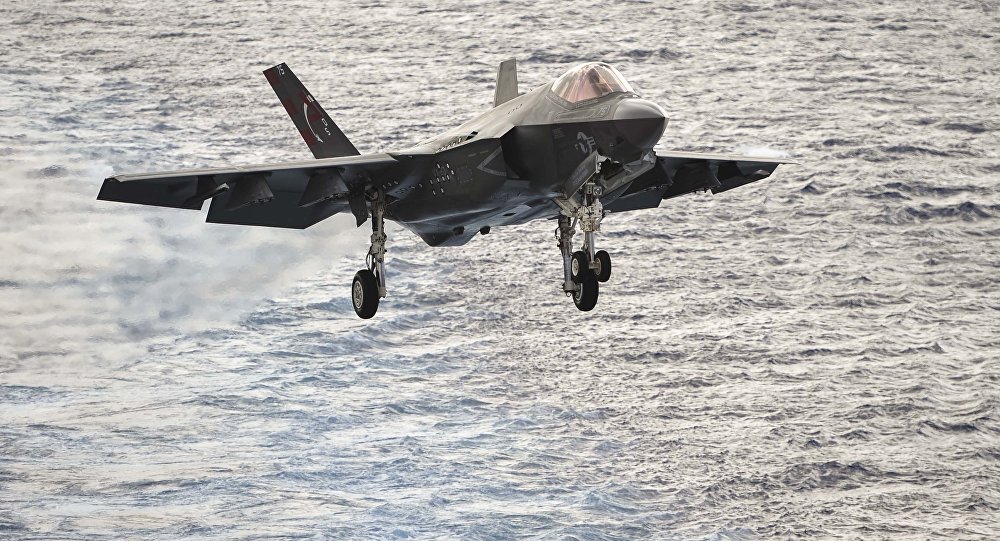
In a world where air superiority is crucial for national security, the selection of fighter aircraft for the U.S. Navy’s carrier-based operations is of strategic significance. The Navy’s decision to choose the F-35C over a ‘Sea Raptor’ variant of the F-22 reflects this importance.

A consideration that once took center stage was the potential adaptation of the Air Force’s F-22 Raptor into a carrier variant, dubbed the ‘Sea Raptor’.

This initiative has been thoroughly evaluated by the Navy, but ultimately, it decided to anchor its carrier air wings with the F-35C Lightning II, designed from the ground up to operate from the flight decks of the fleet’s supercarriers.

The F-35C, now operational, represents the culmination of a meticulous process in selecting the most fitting airframe for the Navy’s complex and demanding carrier environment. Meanwhile, the formidable F-22 Raptor continues its dedicated service with the Air Force, its domain untouched by the complexities of carrier operations.

The F-22, as the world’s first operational fifth-generation fighter, set an unrivaled precedent in air combat capabilities with its stealth, supermaneuverability, and integrated avionics.

Its performance is such that General Mark Welsh, former Air Force Chief of Staff, once underscored its distinction as an air superiority platform, not designed for the multirole missions characteristic of the F-35.

However, the Raptor’s envisioned ‘Sea’ transformation was fraught with challenges. As the Aviation Geek Club elucidates, converting the F-22 for carrier use would have necessitated substantial modifications.

These included structural changes to withstand the brutal dynamics of carrier landings—a process that could have undermined the aircraft’s stealth properties, increased its weight, and inevitably escalated costs.

Moreover, the F-22’s lack of folding wings and the necessary robust landing gear for carrier operations were significant impediments. The Navy’s preference for versatility and a broad mission profile found its answer in the F-35C.

This carrier variant was engineered with enhanced low-speed control, a more ruggedized structure, and larger wings, ensuring its adaptability to the unforgiving maritime operational theater.

The F-35C also boasts advanced avionics and sensor fusion capabilities, which, according to Military Watch Magazine, offer a comprehensive situational awareness that supplements its role beyond that of aerial combat.

Its versatility is further underlined by its ability to carry a wide array of ordnance, including the AGM-154 Joint Stand-off Weapon and JASSM cruise missiles, making it a formidable multirole fighter.

In contrast, the F-22 is better equipped for air dominance roles, with a greater emphasis on air-to-air combat. It carries a potent arsenal of air-to-air missiles and has the added capability for precision ground attacks.

However, its limited air-to-ground munitions and absence of some multirole functions tilt the balance in favor of the F-35C’s comprehensive load-out and operational flexibility.

The F-35 program’s three variants serve the distinct needs of the Air Force, Marine Corps, and Navy, with the F-35C standing out with its tailored features for carrier operations. As the next generation of air dominance fighters develops, the U.S. military’s engagement in the F/A-XX and Next Generation Air Dominance programs will further evolve its combat aircraft capabilities.
Relevant articles:
– Amphenol Aerospace, Amphenol Aerospace
– F-22 Raptor vs. F-35 Joint Strike Fighter: Which Is Better?, nationalinterest.org
– F-22 Raptor Fighters on Aircraft Carriers: Could It Happen?, nationalinterest.org
– F-22 Raptor Vs F-35 Lightning: Ultimate Dog Fight Of The Fifth-Gen Fighter Jets, HotCars, Apr 21, 2023

